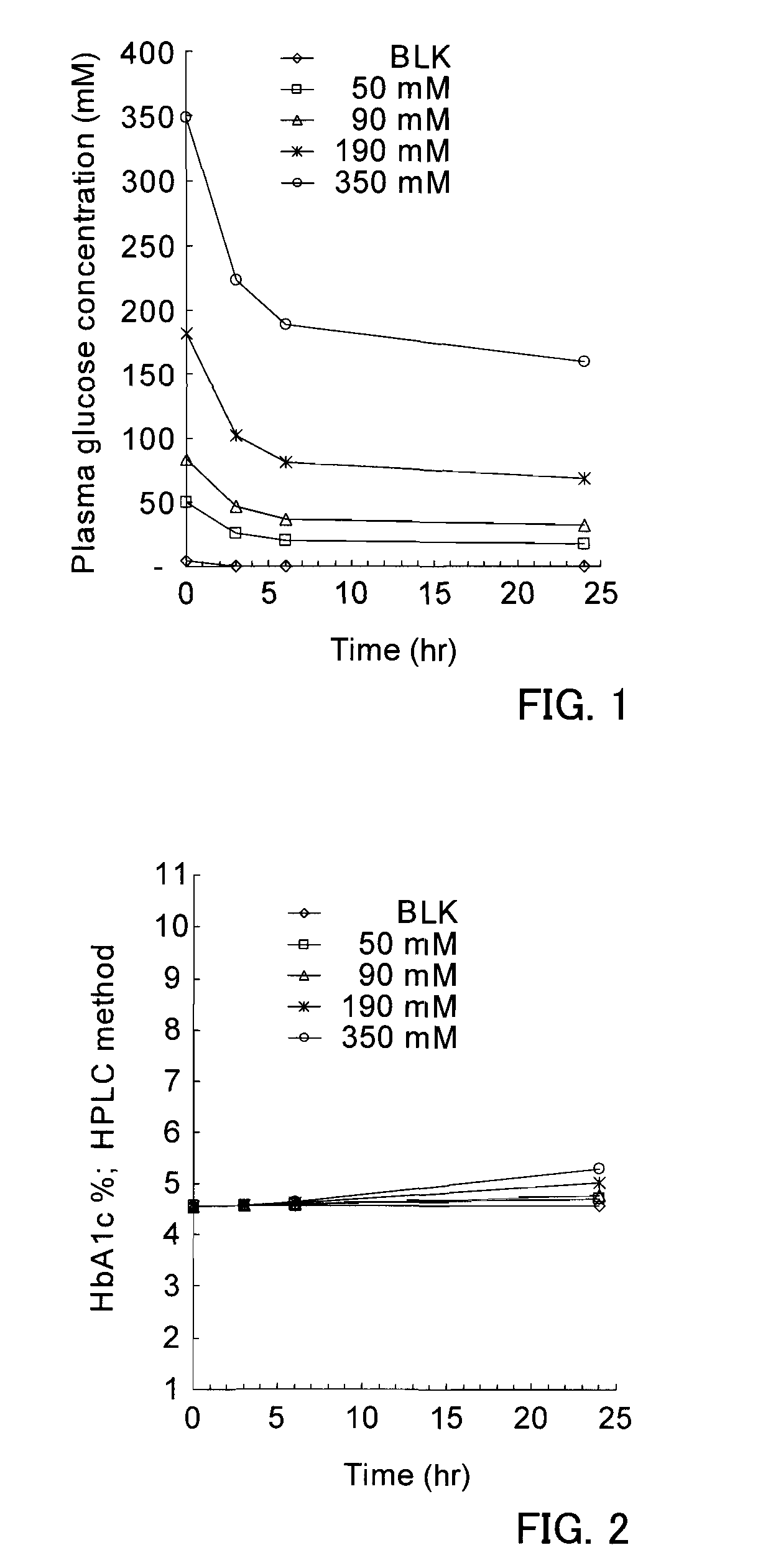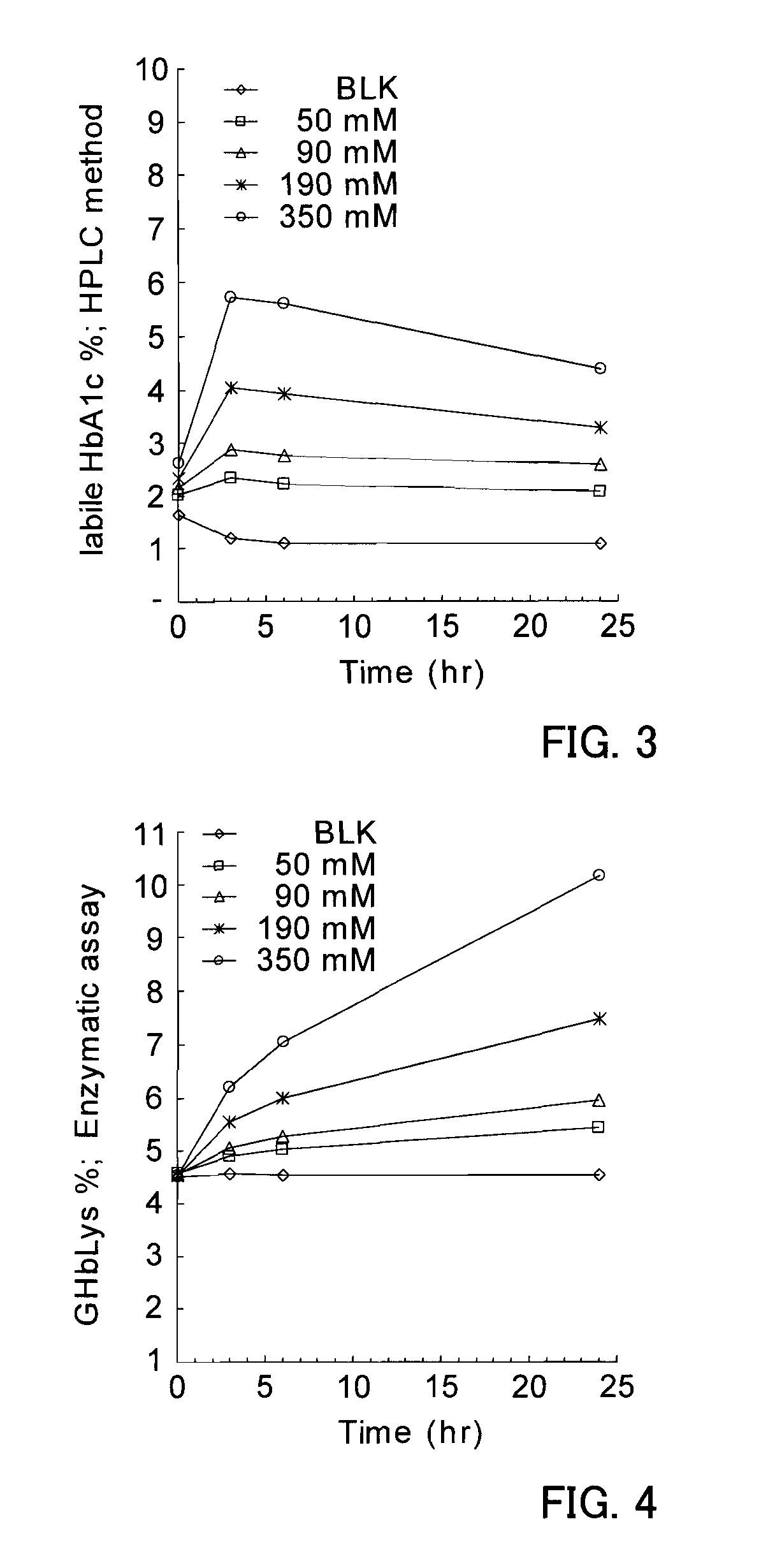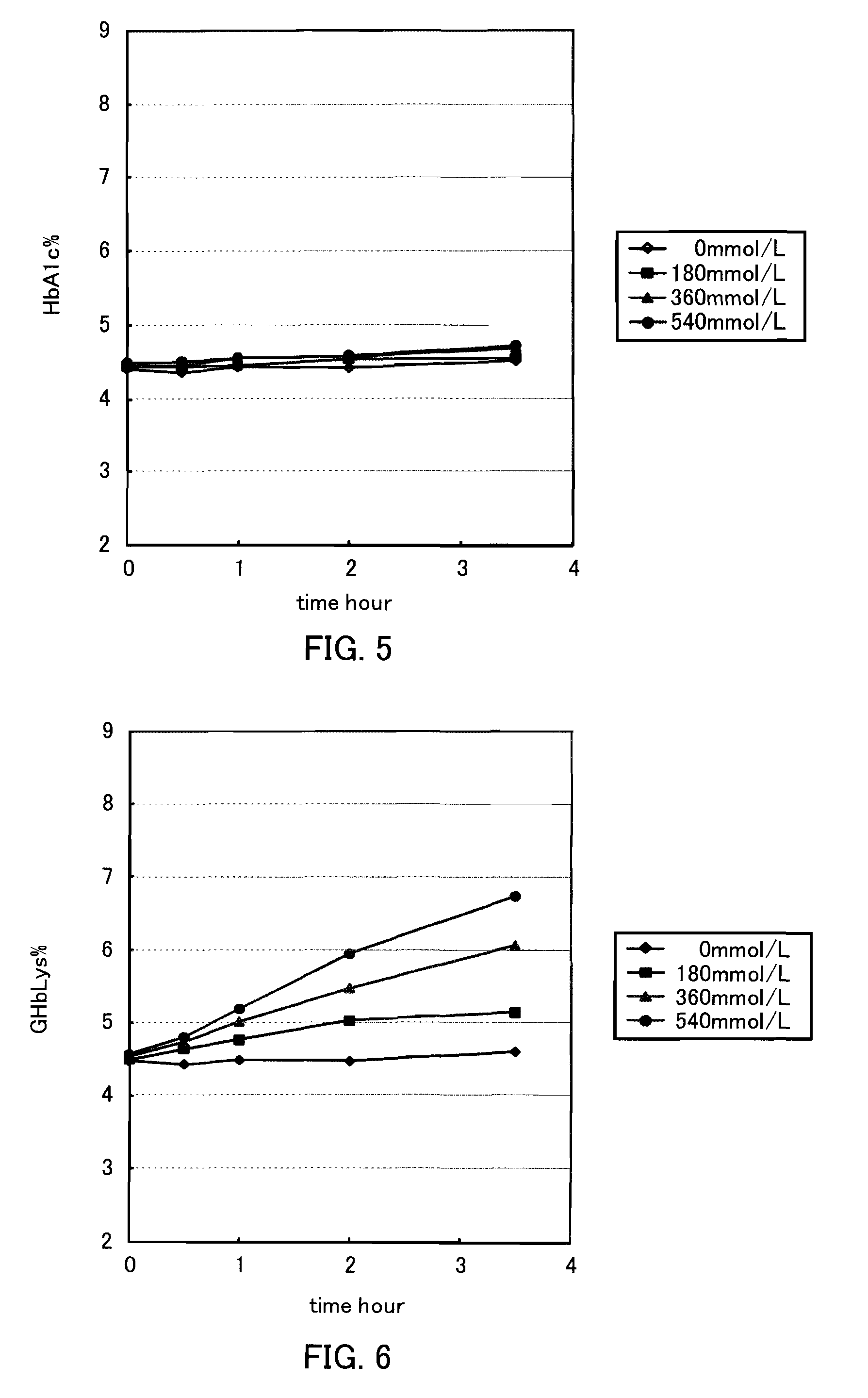Postprandial hyperglycemia marker, method of measuring the same, and usage thereof
a hyperglycemia and marker technology, applied in the field of postprandial hyperglycemia marker, a method of detecting the same, can solve the problems of imposing time and physical burden on patients, developing full-blown diabetes or a possibility of increasing a risk of complications, cerebral infarction, etc., to prevent the development of diabetes, suppress complications, and increase blood glucos
- Summary
- Abstract
- Description
- Claims
- Application Information
AI Technical Summary
Benefits of technology
Problems solved by technology
Method used
Image
Examples
example 1
[0141]The day before an examination, a glucose solution with a predetermined concentration was prepared by dissolving glucose into 0.85% by weight of normal saline. The concentrations were, 500 mM, 900 mM, 1900 mM, and 3500 mM. As for blank (BLK), 0.85% by weight of normal saline was used (glucose concentration 0 mM).
[0142]Blood of a healthy subject was collected in a heparin Na tube and separated into plasma and hemocyte by a centrifugal separation. 3 mL of the separated hemocyte was collected in a screw tube (13.5 ml). Further, 2.7 ml of the separated plasma and 0.3 mL of the normal saline (blank) or 0.3 mL of each glucose solution were mixed respectively to prepare glucose added blood. A glucose concentration in glucose added blood was 0 mM, 50 mM, 90 mM, 190 mM, and 350 mM, respectively. These glucose added blood was kept warm in an incubator of 37° C. while mixing it with a wave loader. Then, a predetermined time (3 hours, 6 hours, and 24 hours) after the start of warming, they...
example 2
[0151]Blood of a healthy subject was collected with a blood collecting tube containing heparin lithium. This blood was separated into a hemocyte fraction and a plasma fraction by leaving it at room temperature for 2 hours to precipitate hemocyte. Then, glucose added plasma was prepared by adding and dissolving 100 mg of glucose into 0.5 mL of separated plasma and leaving it at room temperature for 3 hours. Thereafter, the separated hemocyte and plasma (glucose non-added plasma and glucose added plasma) were mixed at the following ratio, stirred gently, and kept warm at 37° C. With respect to samples of 0 minute after, 30 minutes after, 1 hour after, 2 hours after, and 3.5 hours after the start of mixing, HbA1c % and GHbLys % were measured with the following method.
TABLE 2Sample1Sample 2Sample 3Sample 4Hemocyte0.3 mL0.3 mL0.3 mL0.3 mLGlc non-added plasma0.3 mL0.2 mL0.1 mL—Glc added plasma—0.1 mL0.2 mL0.3 mLGlc concentration (mmol / L)0180360540
[0152]0.065 mL of the sample and 0.065 mL ...
example 3
[0157]Whole blood was collected from a diabetes patient and a healthy subject in the same manner as Example 2. These whole blood were stored in a refrigerator (0 to 25 days) after leaving them at room temperature for a day. After gently stirring the stored whole blood, 0.5 mL of purified water was added to 0.02 mL of whole blood to hemolyze. Using this hemolysis sample, GHbLys % was measured in the same manner as Example 2.
[0158]These results are shown in FIG. 7. FIG. 7 is a graph showing a relationship between a storage time of whole blood and GHbLys %. In FIG. 7, ♦ indicates a result of a sample of a healthy subject and ▪ indicats a result of a sample of a diabetes patient.
[0159]As shown in FIG. 7, a measurement value of GHbLys % was rarely changed even in a case where each whole blood was left from 0 to 25 days. From this, it is found that GHbLys % is rarely changed in blood in a living body of a specimen and in blood collected from a specimen. In other words, unlike a method of ...
PUM
| Property | Measurement | Unit |
|---|---|---|
| temperature | aaaaa | aaaaa |
| temperature | aaaaa | aaaaa |
| carbon number | aaaaa | aaaaa |
Abstract
Description
Claims
Application Information
 Login to View More
Login to View More - R&D
- Intellectual Property
- Life Sciences
- Materials
- Tech Scout
- Unparalleled Data Quality
- Higher Quality Content
- 60% Fewer Hallucinations
Browse by: Latest US Patents, China's latest patents, Technical Efficacy Thesaurus, Application Domain, Technology Topic, Popular Technical Reports.
© 2025 PatSnap. All rights reserved.Legal|Privacy policy|Modern Slavery Act Transparency Statement|Sitemap|About US| Contact US: help@patsnap.com



